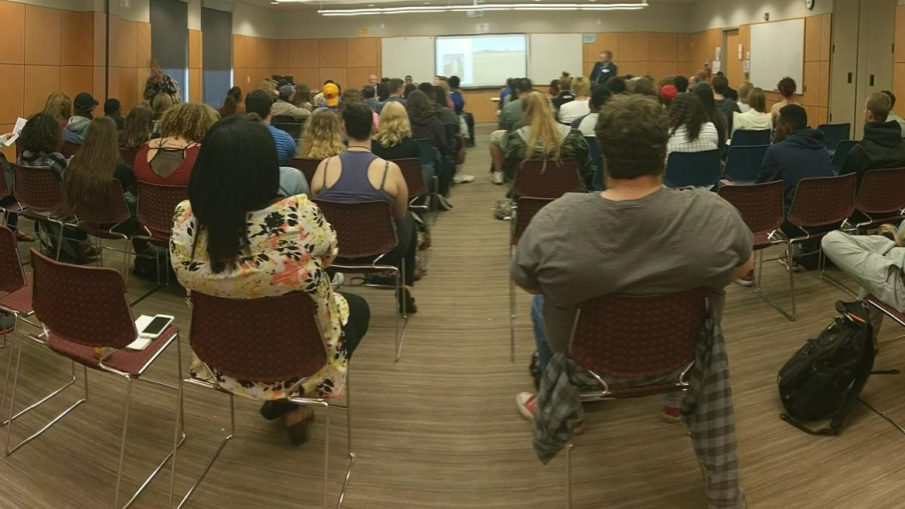By Abigail Brooke and Scott VanGrootenbruel
On October 2, Frederick Community College held a discussion featuring a geography, history and an education professor about the controversy surrounding Civil War monuments. Each panel member explained how to view the issue through the lens of their specific fields, and the meeting ended after the audience asked professors questions relating to their respective disciplines.
While each of the professors discussed many important points, all of them touched on the concept of idealism in America and how to change the narrative to a more accurate understanding of the Civil War.
Corwin Parker discussed how geography plays an important role in determining the intentions of the monuments.
“Geography is a discipline that looks at space. People give meaning to space,” Parker said. “People are labeling species. The major way we do that, is to create space.”
“As a baby, you see, but you are not sure of what you are seeing. So, the socialization process makes you have interpretations of what you see,” Parker added. “You can all see me, but everyone in this room has a different idea of who I am… As visual learners, Confederate Monuments attack, but also soothe nodes in your brain that are generated by what you see. Confederate Monuments have a way of claiming space.”
While it makes sense for there to be Civil War monuments throughout the South — the home of the Confederacy — there is little to no reasoning for why there would be any in states such as Montana, a part of the country that had not been discovered at the time of the Civil War. He also responded to a question posed by an audience member asking why monuments dedicated to people who were technically American traitors were considered socially acceptable.
“This is the United States,” Parker responded. “So, we have very American viewpoints of these monuments, so why we have such a difficult time reconciling these monuments? Because Americans don’t lose. That’s an ideology that we have.”
Michael Powell, a history professor, spoke on how the posture of the men featured in the statues misrepresents their actions.
“Silent Sam was built there to commemorate those from the campus who fought for the Confederacy. Notice where his gun is, pointed up in the air. It is not pointed at anyone. When you look closely, you see that he does not have a cartridge box. He has no bullets. Hence the term ‘Silent Sam’,” Powell said. “The Confederate is not aggressive, the Confederate accepts defeat, still standing straight and tall, but accepts defeat.”
While frequently posed with weapons resting on their shoulders, they present an image of peace instead of aggression.
“These kinds of Monuments were built throughout the South during the late 1800’s and early 1900’s by women to commemorate the sacrifice of soldier.”
Powell added that many of the statues were constructed by women after the war in memory of the men that they lost, and did not accurately reflect the violence of the war.
Powell also showed photos of statues in Allentown, Pennsylvania, that revealed Confederate and Union Soldiers from the Civil War.
“Notice where their riffles are. They are not aggressive in any kind of way… Should we take down some of these monuments and leave others? Some of the Confederates and leave the Union? This is a period known as the ‘Period of Reconciliation’, bring the South back into the Union,” Powell said.
Powell further explained “none of these statues are historically correct. None of these statues were built to be historically correct. They are built for other reasons. By using evidence, we arrive hopefully at some conclusion that’s interpreted.”
Education professor Sara Bigham spoke about how to accurately teach students about the events of the Civil War.
“Most of us in education are concerned in two things. First of all, how are we going to teach this. And second of all, how are we going to empower teachers to have the information they need in order to do that?” Bigham said.
She encouraged teachers to find resources and go on their own personal field trips to learn more about what really happened so that they could be equipped to teach the subject well.
“Get your news from reliable sources. Reach out to find the resources that you need. We encourage you to go on your own kind of fieldtrips,” Bigham added.
She passed out children’s books that celebrated not only heroes of the Civil War era, but also accurately retold stories from throughout the civil rights era. These books are used in elementary school classrooms to properly teach the next generation of Americans about Civil War history.

